|
John Tyman's Cultures in Context Series NEPAL |
|
|
|
190-228 |
|
John Tyman's Cultures in Context Series NEPAL |
|
|
|
190-228 |
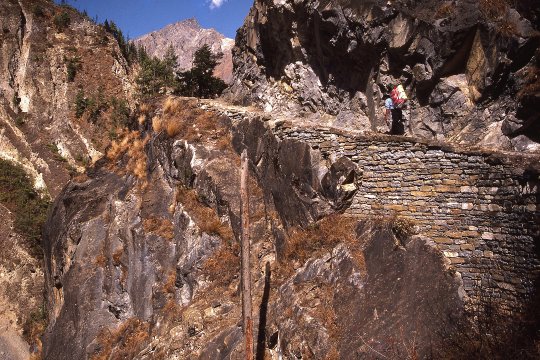 |
| 191. Nepal is a land of man-made trails, not roads. (Near Pisang) |
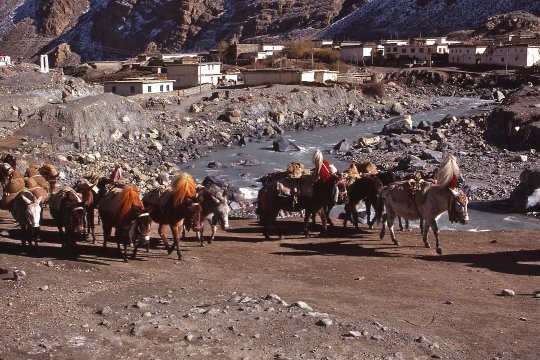 |
| 192. These are broad in places but are in no way suited to vehicle traffic, so everything has to be carried -- on two legs or four. (Near Jomoson) |
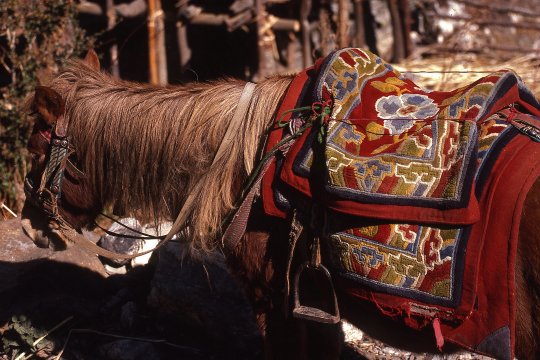 |
| 193. Horses are the preferred means of personal transport for those able to afford such luxury. This one was ridden by a trader heading for Chame, the administrative centre of the Manang District. |
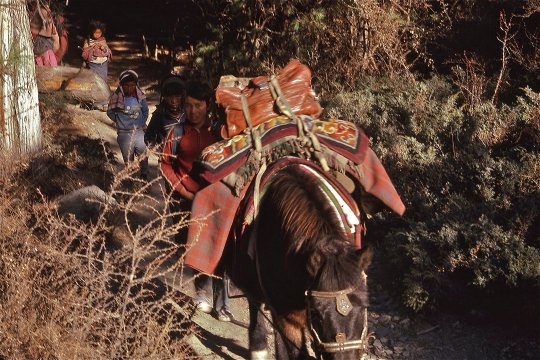 |
| 194. Ordinary folk tie their baggage to their horse and walk behind it. (Near Pisang) |
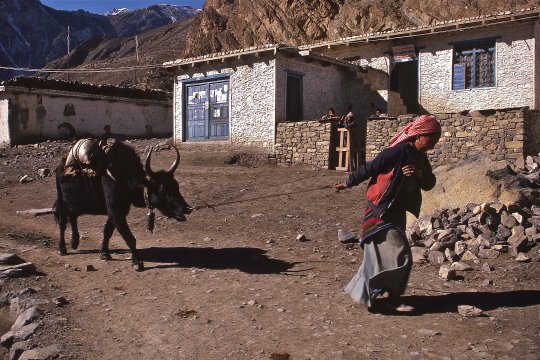 |
| 195. In the Mustang District some people still use yaks or yak hybrids. (Arriving in Jomoson) |
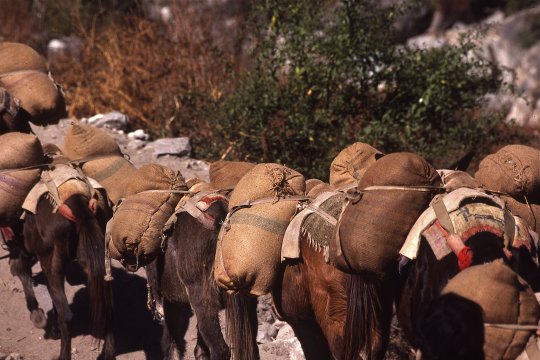 |
| 196. But traders here today use horses or mules: and animal caravans like this are a common sight following both the Marsyangdi and the Kaligandaki rivers. (Near Chame) |
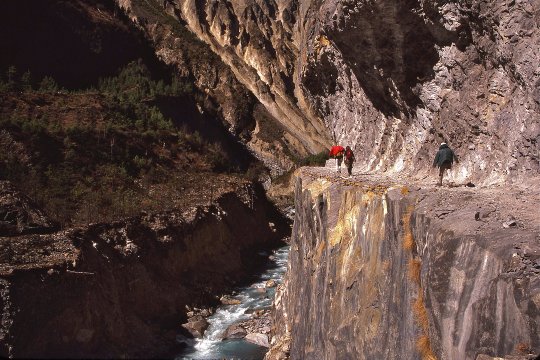 |
| 197. Since many trails have been cut into cliff faces high above the river they offer the unwary traveller the prospect of certain death. (Approaching Pisang) |
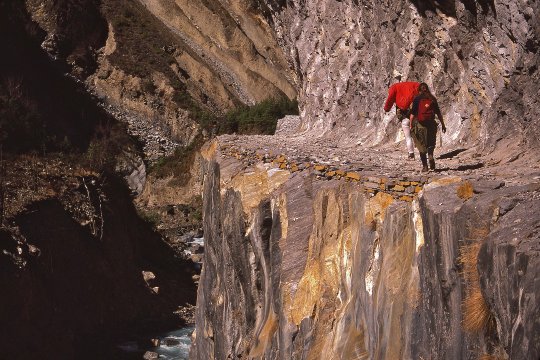 |
| 198. Blind corners are a particular hazard, as it is all too easy to to swept off the cliff by a line of excitable draft animals! |
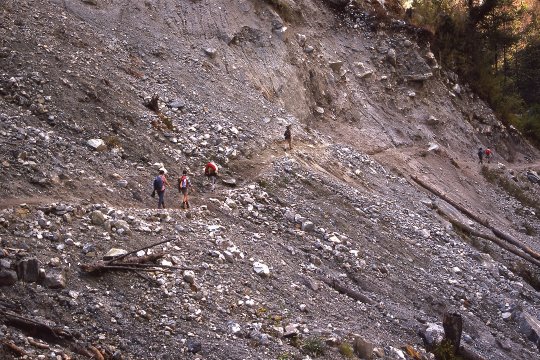 |
| 200. The other danger is landslides, after rains especially. Old trails will be buried and a way must be found around such obstructions. (Near Chame) |
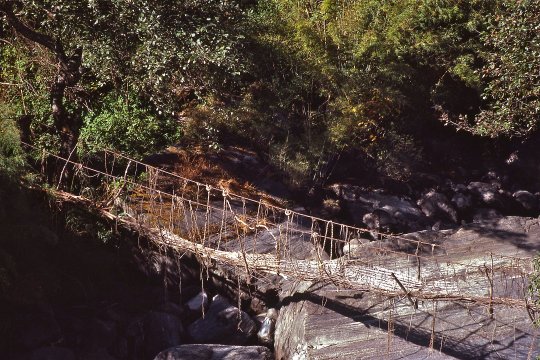 |
| 203. Others are supported by ropes and cable, sometimes high above the river: and the older ones do not inspire much confidence in visitors! (North of Tal) |
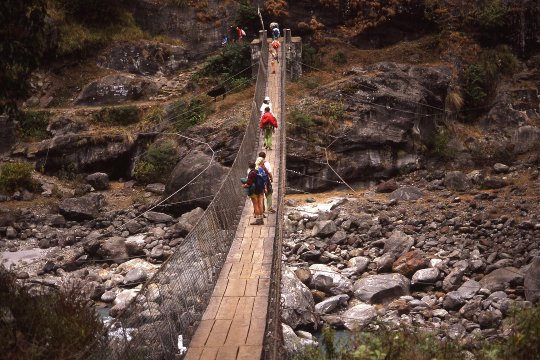 |
| 204. For that very reason, most have been rebuilt, using heavier cables and cross-bracing as protection against strong winds. (Near Tal) |
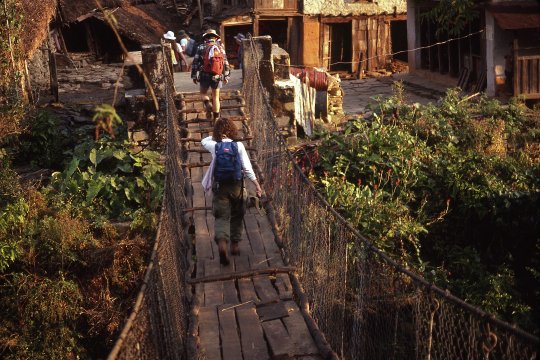 |
| 205. Most bridges are floored with planks of wood, but you may well find some are missing and others are rotten. (Near Phalenkangu on the lower Marsyangdi) |
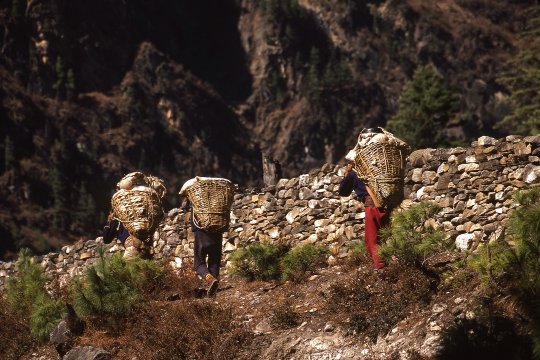 |
| 207. Instead the remotest communities depend on porters to supply them, often over great distances with overnight stops along the way. (Near Pisang) |
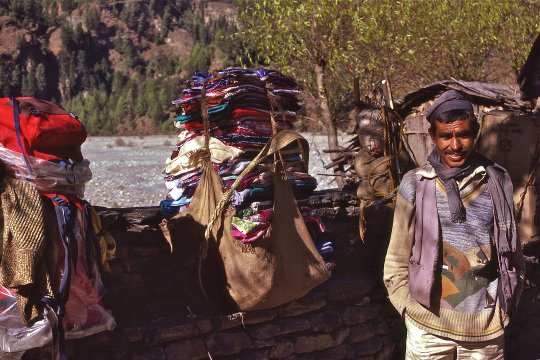 |
| 209. This man, near Larjung, carried supplies for tailors along the Kaligandaki. |
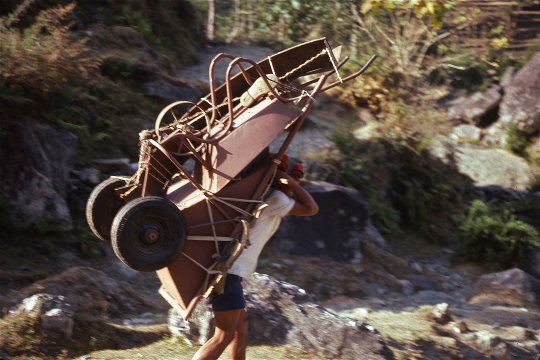 |
| 211. Everything and anything that could be formed into a manageable load was moved by two-legged transport. This man was delivering wheelbarrows south of Tatopani. |
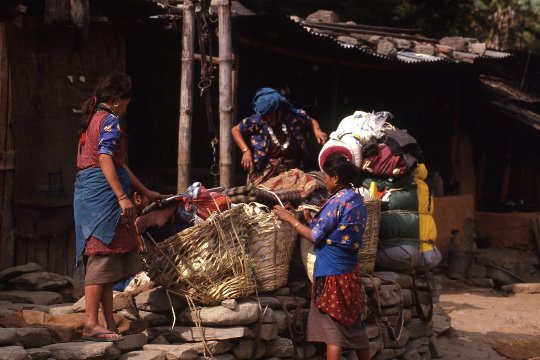 |
| 213. These women carried gear for the camp kitchen of a party of tourists from Australia and New Zealand. (Near Phalenkangu) |
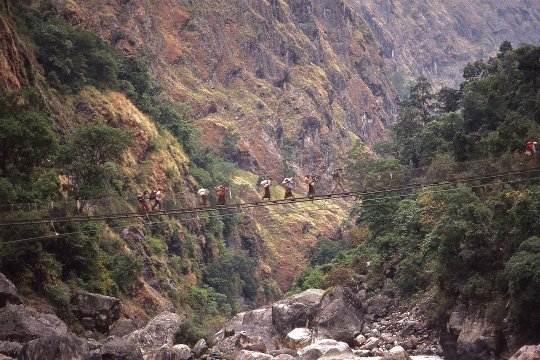 |
| 216. The bridges they must use cannot always be trusted, and many hang high above both rivers and rocks. (Near Tal) |
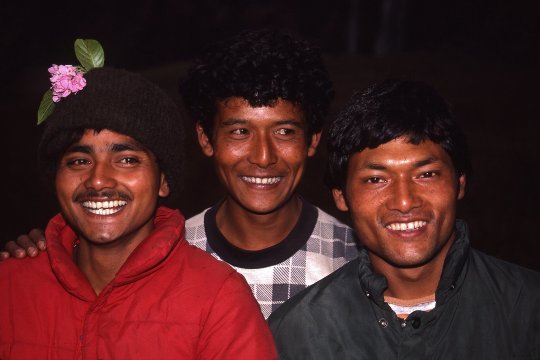 |
| 219. Most organized treks are led by local guides like these. They arrange for porters, plan the meals and campsites, and watch over the health of their customers. |
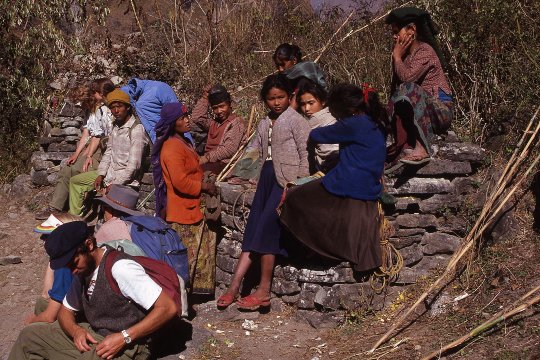 |
| 220. Their visitors carry only small day packs: the bulk of their gear is carried for them, together with their bedding, clothing, and tents. (Near Kalopani) |
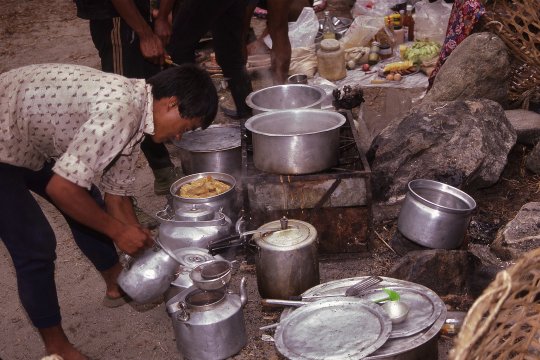 |
| 221. Their meals are cooked along the way by people who have hurried on ahead so the food will be ready when they get there. (Near Tal) |
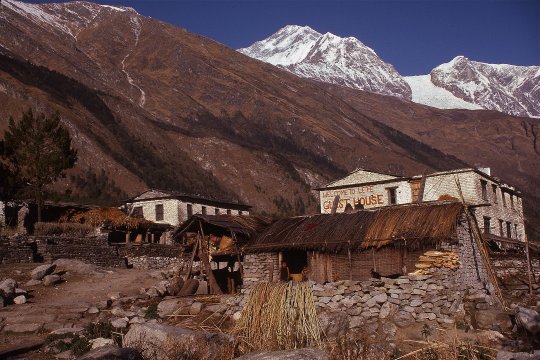 |
| 223. Other trekkers -- “the independents” -- travel alone. They do not normally carry tents but stay at the guesthouses located at strategic points along all the trails. This one was at Kalopani. |
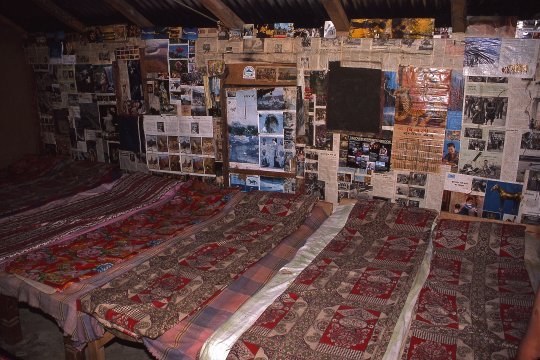 |
| 224. The accommodation that these provide is simple but adequate, and it is usually well decorated. (Near Phalenkangu) |
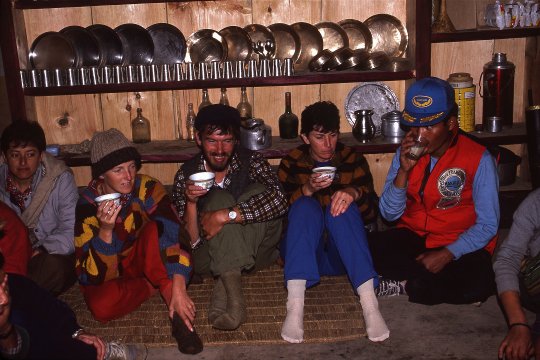 |
| 225. Meals can be had in the same building or at one of the many tea houses. Tibetan butter tea is usually offered to trekkers but rarely accepted. (At Bagarchhap) |
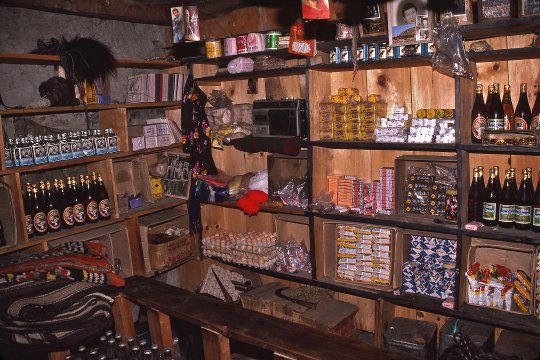 |
| 226. Alcohol in one form or another will be available here too - for the benefit of trekkers and low caste Hindus. (Near Chame) |
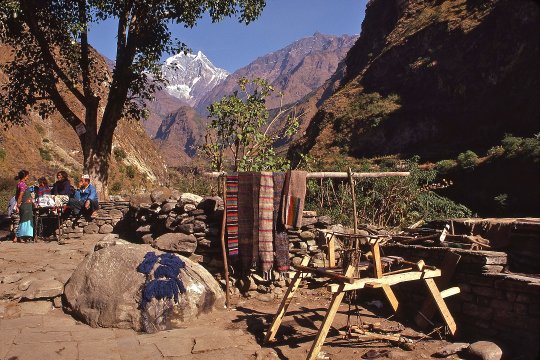 |
| 227. Outside they will be offered locally made handicrafts. (Tatopani) |
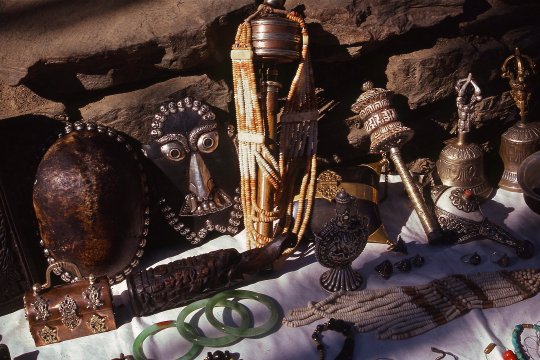 |
| 228. And a range of artifacts may be purchased, some ancient, others modern: but all souvenirs of a visit to the high country. (Ghorepani) |

![]()
Text, photos and recordings
by John Tyman
Intended for Educational Use
Only.
Contact Dr. John Tyman at johntyman2@gmail.com
for more information regarding
licensing.
![]()
www.hillmanweb.com
Photo processing, Web page layout,
formatting and hosting by
William
Hillman ~ Brandon, Manitoba ~ Canada